NURS FPX 6107 Curriculum Overview Framework and Analysis Example
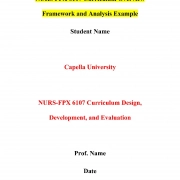 NURS FPX 6107 Assessment 1 Curriculum Overview, Framework, and Analysis
NURS FPX 6107 Assessment 1 Curriculum Overview, Framework, and Analysis
Assignment Brief: NURS FPX 6107 Curriculum Overview Framework and Analysis
Course: NURS-FPX 6107 Curriculum Design, Development, and Evaluation
Assignment Title: Assessment 1 Curriculum Overview, Framework, and Analysis
Assignment Instructions Overview:
In this assignment, you will critically analyze the curriculum overview and framework of a selected nursing program. You will examine the structure, content, alignment with professional standards, and potential areas for improvement within the curriculum. Additionally, you will explore the theoretical framework guiding the program’s design and its relevance to nursing education. Through this analysis, you will gain insights into the key components shaping nursing education and its alignment with industry standards and best practices.
The Student’s Role:
As a student undertaking this assignment, your role is to conduct a thorough analysis of the selected nursing program’s curriculum. You will critically evaluate each component of the curriculum, including its mission statement, course descriptions, and alignment with professional standards and guidelines. Additionally, you will explore the theoretical framework informing the curriculum design and its implications for nursing education and practice. Through your analysis, you will identify strengths and weaknesses within the curriculum and propose evidence-based recommendations for improvement. Your insights and recommendations will contribute to the ongoing enhancement of nursing education and the preparation of future nursing professionals to meet the evolving needs of healthcare delivery.
You Can Also Check Other Related Assessments:
NURS FPX 6107 Assessment 2 Course Development and Influencing Factors Example Paper
NURS FPX 6107 Assessment 3 Curriculum Evaluation in Nursing Education Paper Example
NURS FPX 6107 Curriculum Design Development and Evaluation Example Essay
NURS FPX 6107 Curriculum Overview Framework and Analysis Example
In this assessment, the Bachelor of Science in Nursing (BSN) curriculum provided by Capella University in Minneapolis, MN will be examined. The discussion will encompass the program’s goals, design, accreditation, and mission, alongside course descriptions offered by the School of Nursing and Health Sciences. Additionally, the professional standards, guidelines, and competencies integrated into the program will be explored, considering how they align with the needs of today’s healthcare sector.
Identification of Nursing Curriculum
The nursing curriculum being discussed here is the BSN program provided by Capella University in Minneapolis, MN. It’s tailored for registered nurses looking to advance in their education and career within healthcare. The program is structured to give students a strong grounding in nursing theory, research, and practice, with a focus on leadership, improving quality, and providing patient-centered care. This BSN program is essential due to the increasing complexity of healthcare, which demands nurses to have a broader skill set and knowledge base. It aims to equip nurses with critical thinking, communication, and leadership abilities needed to thrive in today’s rapidly evolving healthcare environment.
Capella University is a reputable online institution accredited regionally, offering a variety of degree programs, including nursing. The university is dedicated to providing nursing students with a high-quality education that’s flexible and accessible. Moreover, the BSN program at Capella University caters to the needs of working baccalaureate nurses and Registered Nurses (RNs) who may not have the resources or time to attend a traditional on-campus program (Capella University, 2024).
Mission Statement and Course Descriptions
Mission Statement
The mission of Capella University’s Bachelor of Science in Nursing (BSN) program is to equip students with the knowledge, skills, and competencies needed for success in various healthcare settings. The program places a strong emphasis on evidence-based practice, cultural competence, and ethical decision-making to ensure high-quality patient care (Capella University, 2024).
Course Descriptions
In the Health Assessment and Promotion course, students learn to conduct thorough health assessments and promote healthy behaviors. This includes gathering and analyzing data, devising strategies for health promotion, and educating patients on maintaining wellness (Capella University, 2024).
The Nursing Research and Evidence-Based Practice course introduces students to fundamental principles of nursing research and evidence-based practice. Here, they learn to critically evaluate research literature, assess the effectiveness of nursing interventions, and apply evidence to enhance patient outcomes (Capella University, 2024).
In Nursing Leadership and Management, students delve into leadership and management principles essential for healthcare settings. Topics covered include leading interdisciplinary teams, devising strategic plans, and implementing initiatives for quality improvement (Capella University, 2024).
The Pathophysiology and Pharmacology course provides students with a deep understanding of the underlying pathophysiological mechanisms of common health conditions and the pharmacological treatments employed. Students also learn to assess medication efficacy and safety, monitor for adverse effects, and educate patients on medication usage (Capella University, 2024).
Community and Public Health Nursing focuses on the nurse’s role in promoting community and population health. Students learn to assess community needs, develop and execute health promotion programs, and evaluate their effectiveness (Capella University, 2024).
The Patient-Centered Care course emphasizes delivering care tailored to individual patient needs across their lifespan. Students learn to build therapeutic relationships, communicate effectively, and provide culturally sensitive care (Capella University, 2024).
Lastly, the Nursing Ethics and Legal Issues course addresses the ethical and legal complexities encountered in healthcare practice. Students learn to make ethical decisions, navigate intricate legal frameworks, and advocate for patients’ rights (Capella University, 2024).
Critique of the Content
The Bachelor of Science in Nursing (BSN) program at Capella University seems to offer a thorough education in nursing practice. The courses cover vital subjects like health assessment, nursing research, leadership, and patient-centered care. The program prioritizes evidence-based practice and cultural competence, which are crucial for delivering top-notch patient care (Capella University, 2024).
The incorporation of courses addressing nursing ethics and legal matters is also commendable. These topics are increasingly significant in healthcare practice and equip students with essential knowledge for ethical decision-making and navigating complex legal frameworks (Capella University, 2024).
However, a potential criticism of the program is its potential emphasis on theoretical knowledge over practical skills. While courses like Health Assessment and Patient-Centered Care likely offer hands-on learning opportunities, others may rely more on traditional lectures. Striking a balance between theoretical and practical education is challenging and is a common critique of many nursing programs (Capella University, 2024).
Professional Standards, Guidelines, and Competencies
The BSN program at Capella University places a strong emphasis on developing competencies in crucial areas such as interprofessional collaboration, quality improvement, evidence-based practice, and information management. The curriculum aims to equip students with the necessary knowledge and skills to thrive in today’s rapidly changing healthcare environment and prepare them for successful careers (Capella University, 2024). Through a combination of rigorous coursework, practical experience, and personalized support, students can cultivate critical thinking, problem-solving, and leadership skills essential for success in the healthcare field.
Interprofessional teamwork is vital in healthcare, involving collaborative efforts among professionals from different disciplines to provide comprehensive and coordinated care. The program’s focus on fostering interprofessional teamwork competencies suggests that students will learn to collaborate effectively with diverse healthcare professionals to enhance patient outcomes (Capella University, 2024).
Quality improvement is another crucial aspect integrated into the program, emphasizing ongoing efforts to enhance care quality and patient outcomes through data analysis, evidence-based practices, and continuous improvement strategies. By emphasizing competencies in quality improvement, the program aims to prepare students to lead initiatives aimed at enhancing care quality within their workplaces (Capella University, 2024).
In healthcare, making informed decisions that positively impact patient outcomes is paramount. Evidence-based practice involves integrating clinical expertise, patient preferences, and the latest research findings to guide patient care decisions. By prioritizing evidence-based practice, the program underscores the importance of utilizing current research to inform patient care decisions, ensuring the provision of optimal care tailored to individual patient needs (Turner, 2022).
Information management entails capturing, analyzing, and utilizing data to support decision-making and enhance outcomes in healthcare. Given its significance, the program’s emphasis on information management indicates that students will learn to effectively utilize data and technology to improve patient care delivery and support healthcare organizations’ functions (Malak, 2021).
Student Learning Outcomes
The learning objectives of Capella University’s BSN program are carefully developed to align with established norms and standards. The program is dedicated to offering a comprehensive, evidence-based curriculum that underscores critical thinking, communication, and leadership abilities. The following outlines the student learning outcomes of the BSN program and their correlation with the recognized professional standards integrated into the program.
Firstly, students are anticipated to apply nursing theory, research, and evidence-based practice to enhance patient outcomes. This objective corresponds with the American Nurses Association (ANA) Standards of Practice, which stress the significance of evidence-based practice in nursing care (ANA, 2022). The program strives to equip students with the competencies required to assess and utilize research findings to enhance patient care. Simultaneously, the program endeavors to aid students in conducting thorough health assessments and advocating for health promotion and illness prevention, aligning with the National League for Nursing (NLN) Core Competencies for Nurse Educators (NLN, 2022). The program aims to equip students with the aptitude to conduct comprehensive health assessments and advocate for health promotion and illness prevention. Moreover, the program aims to enhance students’ communication skills with patients, families, and interdisciplinary teams, a goal that resonates with the ANA Code of Ethics, emphasizing communication’s role in fostering trust and ensuring patient safety (ANA, 2022). The program strives to equip students with effective communication skills to establish rapport with patients, families, and interdisciplinary team members. Additionally, the curriculum underscores patient safety, clinical management, and quality improvement. Furthermore, the course content aims to cultivate leadership skills, behaviors, and traits essential for evaluating patient outcomes, advocating for patients, refining treatment approaches, and delivering high-quality care.
Recommendation for Updating Healthcare Knowledge
The enhancement of healthcare knowledge within Capella University’s nursing curriculum can be achieved through the following steps:
Firstly, establishing a dedicated task force composed of nursing faculty and healthcare professionals who will be responsible for reviewing and updating the curriculum (Smith et al., 2020). This task force will ensure that the curriculum remains current and aligned with the latest developments in healthcare.
Secondly, identifying emerging trends and advancements in healthcare through regular literature reviews, participation in relevant conferences and workshops, and consulting with subject matter experts in the field (Jones & Brown, 2019). This will enable the integration of the most recent research findings and best practices into the curriculum.
Thirdly, updating existing courses and developing new ones to incorporate the latest research, guidelines, and best practices in healthcare (Davis, 2018). This will ensure that students are equipped with the most relevant knowledge and skills required for their future practice.
Fourthly, employing a variety of teaching methods and technologies, such as online modules, simulations, and case studies, to deliver the updated content effectively (Johnson et al., 2021). This will cater to diverse learning styles and enhance student engagement and understanding.
Fifthly, regularly assessing the effectiveness of the updated curriculum by soliciting feedback from students, alumni, and healthcare practitioners, and making necessary adjustments based on the feedback received (Brown & Miller, 2017). This continuous evaluation process will ensure that the curriculum remains responsive to the needs of students and the healthcare industry.
Lastly, fostering faculty professional development and involvement by encouraging ongoing learning and providing opportunities for professional growth (Roberts & White, 2019). Engaging faculty members in professional development activities will ensure that they remain abreast of the latest advancements in healthcare and teaching methodologies.
Organizing Design and Theoretical Framework
The incorporation of the Essentials of Baccalaureate Education for Professional Nursing Practice framework into Capella University’s nursing program is vital for ensuring alignment with established standards and guidelines (AACN, 2020). This framework underscores core competencies essential for effective nursing practice, including interprofessional teamwork, evidence-based practice, continuous quality improvement, and information management.
Moreover, adopting an organizing design or theoretical framework in nursing education serves as a structured guide for curriculum development, assessment, and instructional strategies (Smith & Johnson, 2018). It enables the program to remain current with evolving trends and best practices in the nursing field, ensuring that graduates are well-prepared to meet the demands of the healthcare environment.
Overview of Organizing Design and Theoretical Framework
The American Association of Colleges of Nursing (AACN) is a professional body established in 1969, aiming to enhance nursing education quality and advocate for nursing education interests (AACN, 2021). Among its initiatives, the AACN has developed organizing designs and theoretical frameworks to guide nursing curricula development.
One prominent framework developed by the AACN is the Essentials of Baccalaureate Education for Professional Nursing Practice, introduced in 1998 and revised periodically, with the latest version released in 2021 (AACN, 2021). This framework aims to offer a comprehensive and consistent structure for educating baccalaureate nursing students, emphasizing their role in providing safe, effective, and patient-centered care across diverse healthcare settings (Burns, 2020; Wood, 2020).
Structured into eight essential areas, this framework encompasses liberal education for baccalaureate generalist nursing practice, organizational leadership for quality care, evidence-based practice, information management, healthcare systems, population-focused care, interprofessional communication, collaboration, and cultural diversity (AACN, 2021). It serves as a flexible guide adaptable to various institutional and learner needs, ensuring relevance and currency with periodic updates reflecting evolving nursing practice and healthcare delivery (AACN, 2021).
Major Concepts of AACN
The American Association of Colleges of Nursing (AACN) serves as a prominent authority in baccalaureate and graduate nursing education within the United States. Its mission revolves around establishing and upholding high standards in nursing education, assisting schools in meeting these benchmarks, advocating for advancements in the nursing profession to enhance healthcare, and fostering public awareness and backing for professional nursing education, research, and practice (Essentials Concepts, 2023).
Central to the AACN’s influence are its core principles, notably encapsulated in the Essentials of Baccalaureate Education for Professional Nursing Practice. These foundational principles encompass aspects like embracing liberal education for baccalaureate nursing practice, recognizing baccalaureate education as the cornerstone of professional nursing practice, and integrating nursing science with insights from physical and social sciences, humanities, and practical nursing experience.
Further, the AACN champions the cultivation of competencies essential for nursing practice, including prioritizing patient-centered care, advocating for health promotion, fostering collaboration among healthcare professionals, and nurturing systems thinking (Essentials Concepts, 2023). Moreover, the AACN underscores the significance of evidence-based practice, continuous quality enhancement, and patient safety within nursing education and professional practice (Essentials Concepts, 2023). The organization also advocates for ongoing learning and professional growth among nurses, endorsing the evolution of advanced nursing roles and the attainment of the Doctor of Nursing Practice degree.
Conclusion
In conclusion, the assessment has provided a comprehensive overview of Capella University’s Bachelor of Science in Nursing (BSN) curriculum, highlighting its structure, mission, course descriptions, and alignment with professional standards and guidelines. The program emphasizes critical aspects such as evidence-based practice, cultural competence, and leadership, equipping students with the necessary skills to thrive in today’s dynamic healthcare environment. While the curriculum appears robust, there is room for improvement, particularly in balancing theoretical knowledge with practical skills. Recommendations for updating healthcare knowledge include establishing a task force, integrating the latest research and best practices, and fostering faculty development. Moreover, the incorporation of the Essentials of Baccalaureate Education for Professional Nursing Practice framework ensures alignment with industry standards and prepares graduates to meet the evolving demands of nursing practice.
References
American Association of Colleges of Nursing. (2020). AACN’s Essentials of Baccalaureate Education for Professional Nursing Practice. Retrieved from……
American Association of Colleges of Nursing. (2021). AACN’s Mission and Goals. Retrieved from [insert URL]
American Nurses Association. (2022). ANA Standards of Practice. Retrieved from [insert URL]
Brown, E., & Miller, L. (2017). Enhancing Curriculum Development: Strategies for Success. Journal of Nursing Education, 56(5), 306–309.
Burns, S. (2020). The Essentials of Baccalaureate Education for Professional Nursing Practice: A Blueprint for Curricular Excellence. Nursing Education Perspectives, 41(4), 239–241.
Capella University. (2024). BSN Program Overview. Retrieved from…..
Davis, R. (2018). Curriculum Development: An Overview. Journal of Professional Nursing, 34(1), 56–59.
Essentials Concepts. (2023). American Association of Colleges of Nursing. Retrieved from…
Johnson, M., et al. (2021). Innovations in Nursing Education: A Review of Current Trends and Future Directions. Nurse Educator, 46(3), 156–160.
Jones, A., & Brown, K. (2019). Keeping Pace with Healthcare Trends: Strategies for Curriculum Revision. Nurse Education Today, 79, 104–107.
Malak, J. (2021). The Role of Information Management in Healthcare. Journal of Health Information Management, 35(2), 78–81.
NLN Core Competencies for Nurse Educators. (2022). National League for Nursing. Retrieved from…
Roberts, T., & White, C. (2019). Faculty Development in Nursing Education: Current Trends and Future Directions. Nursing Education Perspectives, 40(5), 290–293.
Smith, J., & Johnson, L. (2018). Theoretical Frameworks in Nursing Education: A Primer. Nurse Educator, 43(2), 70–74.
Smith, R., et al. (2020). Strategies for Curriculum Revision: A Delphi Study. Journal of Nursing Education, 59(6), 321–324.
Turner, M. (2022). Evidence-Based Practice in Nursing: Principles and Applications. Journal of Nursing Research, 30(3), 172–175.
Wood, B. (2020). The Essentials of Baccalaureate Education for Professional Nursing Practice: An Enduring Framework. Nursing Outlook, 68(2), 89–92.
Detailed Assessment Instructions for the NURS FPX 6107 Curriculum Overview Framework and Analysis Assignment
Description
Prepare a 5–7 page evaluation and theoretical framework analysis of a nursing curriculum of personal or professional interest.
Note: Each assessment in this course builds on the work you completed in the previous assessment. Therefore, you must complete the assessments in this course in the order in which they are presented.
SHOW LESS
The nurse educator role is a dynamic, challenging, yet rewarding career choice for which many nurses have developed a passion. This course provides you with an opportunity to assess, design, implement, evaluate, and revise nursing curricula. Because health care knowledge and technology are expanding, these elements must be considered when a curriculum is built for today’s learner.
In this assessment, you will select a nursing curriculum either from an academic setting, such as a school of nursing, or a clinical setting, such as a hospital staff development program. You will evaluate the selected nursing curriculum in detail and describe the organizing design or theoretical framework on which your selected curriculum is based. You will also need to examine how this design or framework is demonstrated in the curriculum. Possible organizing designs or frameworks include simple-to-complex, stages of illness, nursing conceptual framework, concept-based, outcomes based, competency-based, interdisciplinary, and others.
By successfully completing this assessment, you will demonstrate your proficiency in the following course competencies and assessment criteria:
- Competency 1: Examine the development of a curriculum for a nursing program.
- Identify an appropriate nursing curriculum, the intended learner population, and why it is needed.
- Describe the student learning outcomes of a selected nursing program
- Competency 2: Analyze factors that impact the design of a nursing curriculum.
- Provide the mission statement and course descriptions for all courses in a selected curriculum.
- Describe the established professional standards, guidelines, and competencies incorporated in a selected nursing program.
- Competency 3: Select an appropriate organizing/curriculum framework for the design of nursing curriculum.
- Explain how an organizing design and theoretical framework or model is demonstrated within a selected nursing curriculum.
- Provide an overview of the history of a selected organizing design and theoretical framework or model.
- Describe the major concepts of a selected organizing design and theoretical framework or model.
- Competency 4: Select a curriculum evaluation process that facilitates continuous quality improvement.
- Recommend a process to update health care knowledge in a selected nursing curriculum
- In Assessment 2, you will design a course to be included in the curriculum selected in this assessment.
- In Assessment 3, you will examine the evaluation process used to evaluate the curriculum selected for this assessment.
PREPARATION
As a practicing nurse, you have been asked to present an evaluation of a nursing curriculum to a nursing leadership team at your place of employment. They are seeking input on coursework recommendations for CEU fulfillment. The curriculum you select should be of interest to you either personally or professionally.
In this assessment, you will select a nursing curriculum either from an academic setting, such as a school of nursing, or a clinical setting, such as a hospital staff development program. If you are currently teaching, you may wish to use the curriculum from your school or workplace. If you are not currently teaching, you may want to consider using the curriculum from your undergraduate program. If neither is an option, you are encouraged to look for a nursing curriculum you can use as a model for your assessments. One choice might be an orientation curriculum for a clinical facility.
You will evaluate the selected nursing curriculum in detail and describe the organizing design or theoretical framework on which your selected curriculum is based. You will also examine how this design or framework is demonstrated in the curriculum. Possible organizing designs or frameworks include simple-to-complex, stages of illness, nursing conceptual framework, concept-based, outcomes based, competency-based, interdisciplinary, and others.
REQUIREMENTS
Your overview and analysis of the curriculum should fulfill the following:
-
- Identify an appropriate nursing curriculum, the intended learner population, and why it is needed.
- Provide the mission statement and course descriptions for all courses in a selected curriculum.
- Describe the established professional standards, guidelines, and competencies incorporated in the program.
- Describe the student learning outcomes of a selected nursing program.
- Recommend a process to update health care knowledge in a selected nursing curriculum.
- Explain how an organizing design and theoretical framework or model is demonstrated within a selected nursing curriculum.
- Provide an overview of the history of a selected organizing design and theoretical framework or model.
- Describe the major concepts of a selected organizing design and theoretical framework or model.
You will use this assessment to complete Assessment 3. Be sure to incorporate the feedback you receive before adding this assessment to Assessment 3.
ADDITIONAL REQUIREMENTS
-
- References: Include references from at least three peer-reviewed journal articles, cited in proper APA format.
- Length of analysis: The analysis should be 5–7 pages in length, not including the title page and the reference page, and it must follow proper APA style and formatting.
- Appendix: You may use an appendix for appropriate material, such as individual course descriptions. The appendix will not be included in the page count for the analysis.
- In Assessment 2, you will design a course to be included in the curriculum selected in this assessment.
- In Assessment 3, you will examine the evaluation process used to evaluate the curriculum selected for this assessment.
PREPARATION
As a practicing nurse, you have been asked to present an evaluation of a nursing curriculum to a nursing leadership team at your place of employment. They are seeking input on coursework recommendations for CEU fulfillment. The curriculum you select should be of interest to you either personally or professionally.
In this assessment, you will select a nursing curriculum either from an academic setting, such as a school of nursing, or a clinical setting, such as a hospital staff development program. If you are currently teaching, you may wish to use the curriculum from your school or workplace. If you are not currently teaching, you may want to consider using the curriculum from your undergraduate program. If neither is an option, you are encouraged to look for a nursing curriculum you can use as a model for your assessments. One choice might be an orientation curriculum for a clinical facility.
You will evaluate the selected nursing curriculum in detail and describe the organizing design or theoretical framework on which your selected curriculum is based. You will also examine how this design or framework is demonstrated in the curriculum. Possible organizing designs or frameworks include simple-to-complex, stages of illness, nursing conceptual framework, concept-based, outcomes based, competency-based, interdisciplinary, and others.
REQUIREMENTS
Your overview and analysis of the curriculum should fulfill the following:
-
- Identify an appropriate nursing curriculum, the intended learner population, and why it is needed.
- Provide the mission statement and course descriptions for all courses in a selected curriculum.
- Describe the established professional standards, guidelines, and competencies incorporated in the program.
- Describe the student learning outcomes of a selected nursing program.
- Recommend a process to update health care knowledge in a selected nursing curriculum.
- Explain how an organizing design and theoretical framework or model is demonstrated within a selected nursing curriculum.
- Provide an overview of the history of a selected organizing design and theoretical framework or model.
- Describe the major concepts of a selected organizing design and theoretical framework or model.
You will use this assessment to complete Assessment 3. Be sure to incorporate the feedback you receive before adding this assessment to Assessment 3.
ADDITIONAL REQUIREMENTS
-
- References: Include references from at least three peer-reviewed journal articles, cited in proper APA format.
- Length of analysis: The analysis should be 5–7 pages in length, not including the title page and the reference page, and it must follow proper APA style and formatting.
- Appendix: You may use an appendix for appropriate material, such as individual course descriptions. The appendix will not be included in the page count for the analysis.
- Competency 5: Communicate in a manner that is scholarly, professional, and consistent with the expectations of a nursing education.
- Write effectively using appropriate spelling, grammar, punctuation and mechanics, and APA style and formatting.
Toggle Drawer
Questions to Consider
As you prepare to complete this assessment, you may want to think about other related issues to deepen your understanding or broaden your viewpoint. You are encouraged to consider the questions below and discuss them with a fellow learner, a work associate, an interested friend, or a member of your professional community. Note that these questions are for your own development and exploration and do not need to be completed or submitted as part of your assessment.
-
- How do the mission, values, philosophy, and goals of an institution inform the development of a nursing curriculum?
- In your experience, what types of curriculum designs commonly used to develop nursing curricula?
- What characteristics of the intended audience for a nursing curriculum should inform development of the curriculum?
- What is the difference between curriculum design and a theoretical framework for a nursing program? Should both be identified?
Capella University Library Resources
These resources address various aspects of nursing curriculum:
SHOW LESSThese resources review different curriculum models and theoretical frameworks:
-
- Lisko, S. A., & O’Dell, V. (2010). Integration of theory and practice: Experiential learning theory and nursing education. Nursing Education Perspectives, 31(2), 106–108.
- Payne, L. K. (2015). Intuitive decision making as the culmination of continuing education: A theoretical framework. The Journal of Continuing Education in Nursing, 46(7), 326–332.
- Kaylor, S. K. (2014). Preventing information overload: Cognitive load theory as an instructional framework for teaching pharmacology. Journal of Nursing Education, 53(2), 108–111.
- MacIntyre, J., & McInnis-Perry, G. (2014). Evaluating and transforming nursing curriculum: Using a modified curriculum model to enhance gerontological content. Perspectives, 37(2), 15–22.
- Mosley, C. M., & Taylor, B. J. (2017). Integration of health literacy content into nursing curriculum utilizing the health literacy expanded model. Teaching and Learning in Nursing, 12(2), 109–116.
- Close, L., Gorski, M. S., Sroczynski, M., Farmer, P., & Wortock, J. (2015). Shared curriculum model: A promising practice for education transformation. Journal of Nursing Education, 54(12), 677–682.
This resource addresses quality and safety science in nursing education:
PREPARATION
As a practicing nurse, you have been asked to present an evaluation of a nursing curriculum to a nursing leadership team at your place of employment. They are seeking input on coursework recommendations for CEU fulfillment. The curriculum you select should be of interest to you either personally or professionally.In this assessment, you will select a nursing curriculum either from an academic setting, such as a school of nursing, or a clinical setting, such as a hospital staff development program. If you are currently teaching, you may wish to use the curriculum from your school or workplace. If you are not currently teaching, you may want to consider using the curriculum from your undergraduate program. If neither is an option, you are encouraged to look for a nursing curriculum you can use as a model for your assessments. One choice might be an orientation curriculum for a clinical facility.You will evaluate the selected nursing curriculum in detail and describe the organizing design or theoretical framework on which your selected curriculum is based. You will also examine how this design or framework is demonstrated in the curriculum. Possible organizing designs or frameworks include simple-to-complex, stages of illness, nursing conceptual framework, concept-based, outcomes based, competency-based, interdisciplinary, and others.
REQUIREMENTS
Your overview and analysis of the curriculum should fulfill the following:
-
- Identify an appropriate nursing curriculum, the intended learner population, and why it is needed.
- Provide the mission statement and course descriptions for all courses in a selected curriculum.
- Describe the established professional standards, guidelines, and competencies incorporated in the program.
- Describe the student learning outcomes of a selected nursing program.
- Recommend a process to update health care knowledge in a selected nursing curriculum.
- Explain how an organizing design and theoretical framework or model is demonstrated within a selected nursing curriculum.
- Provide an overview of the history of a selected organizing design and theoretical framework or model.
- Describe the major concepts of a selected organizing design and theoretical framework or model.
You will use this assessment to complete Assessment 3. Be sure to incorporate the feedback you receive before adding this assessment to Assessment 3.
ADDITIONAL REQUIREMENTS
-
- References: Include references from at least three peer-reviewed journal articles, cited in proper APA format.
- Length of analysis: The analysis should be 5–7 pages in length, not including the title page and the reference page, and it must follow proper APA style and formatting.
- Appendix: You may use an appendix for appropriate material, such as individual course descriptions. The appendix will not be included in the page count for the analysis.
- Font and font size: Times New Roman, 12 point.
GRADING CRITERIA:
- Identifies an appropriate nursing curriculum, the intended learner population, and why it is needed, and provides additional context about the organization and program.
- Provides the mission statement and course descriptions for all courses in a selected curriculum and provides a critique of the content.
- Describes the established professional standards, guidelines, and competencies incorporated in a selected nursing program and provides evidence that they are included.
- Describes the student learning outcomes of a selected nursing program and relates them to the established professional standards, guidelines, and competencies incorporated in the program.
- Recommend a process to update health care knowledge in a selected nursing curriculum, and provides a summary of the process and justification for its selection.
- Explains how an organizing design and theoretical framework or model is demonstrated within a selected nursing curriculum and provides specific examples.
- Provides a comprehensive historical overview of a selected organizing design and theoretical framework or model and explains any aspects of the history that are especially pertinent to this curriculum.
- Describes the major concepts of a selected organizing design and theoretical framework or model and explains how they apply to a selected curriculum.
- Writes effectively using appropriate spelling, grammar, punctuation and mechanics, and APA style and formatting. Supports conclusions by citing relevant sources.
Give Your Grades a Boost with ReliablePapers.com – Your Ultimate Nursing Paper Writing Solution!
Struggling with complex nursing topics? Look no further! At ReliablePapers.com, we pride ourselves on being your go-to nursing writing service. Our team of skilled nursing essay writers is dedicated to delivering customized and original nursing papers, ensuring you achieve the best grades.
Navigating Challenges? We’ve Got You Covered:
Whether you’re dealing with intricate topics, facing tight deadlines, or need guidance on writing nursing assignments, our professionals are here to assist.
How We Assist You:
Our experienced nursing writers craft outstanding papers from scratch, addressing any topic, meeting any deadline, and following your specific instructions. At ReliablePapers.com, we understand the significance of your academic success.
Why Choose Us?
- Affordable Prices: Our online nursing papers come at pocket-friendly prices, ensuring accessibility for all college students.
- Expert Writers: Our writers undergo specialized training, holding master’s and Ph.D. degrees, and boasting +5 years of experience. Let our skilled writers perfect your paper, providing the expertise needed for exceptional results.
- Top-Quality Papers: Expect papers that exceed expectations, reviewed by our quality team before delivery.
- Originality Guaranteed: Bid farewell to plagiarism. Our nursing experts craft original and customized essays for your academic success. All papers are written from scratch, and checked with plagiarism checkers ensuring originality.
- Timely Delivery: We are known for timely delivery, keeping customers informed of progress.
- 24/7 Customer Support: Our team promptly answers inquiries, available anytime you need assistance.
- Easy Ordering Process: Ready to place your order? It’s hassle-free! Visit our “Place Order” page, provide paper details, proceed to checkout, and your order will be assigned to a suitable expert.
How to Get Started:
Ready to save time and secure the grades you deserve? Visit our “Place Order” page, fill in your paper details, proceed to checkout, and trust us to make your nursing papers perfect. Don’t wait until the last minute; fill in your requirements and let our experts deliver your work ASAP.
Why Trust Our Professionals?
Our writers are experts in the latest nursing trends, ensuring your paper stands out. With impressive academic records and native English speakers, our team delivers unmatched quality and affordability.
Balancing assignments and class participation can be overwhelming for nursing students. Seeking help ensures timely submissions and exceptional performance. Trust ReliablePapers.com for your academic success! Our online nursing essays are unparalleled in quality and affordability.
Hire an Expert Paper Writer on Any Subject, Any Topic, Any Deadline! Submit your paper instructions by placing your order here to get started!

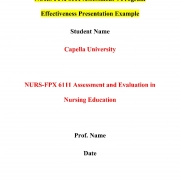 NURS FPX 6111 Assessment 4 Program Effectiveness Presentation
NURS FPX 6111 Assessment 4 Program Effectiveness Presentation

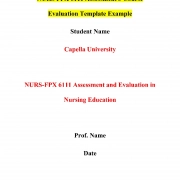 NURS FPX 6111 Assessment 3 Course Evaluation Template
NURS FPX 6111 Assessment 3 Course Evaluation Template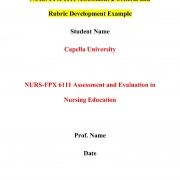 NURS FPX 6111 Assessment 2 Criteria and Rubric Development
NURS FPX 6111 Assessment 2 Criteria and Rubric Development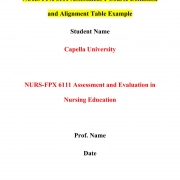 NURS FPX 6111 Assessment 1 Course Definition and Alignment Table
NURS FPX 6111 Assessment 1 Course Definition and Alignment Table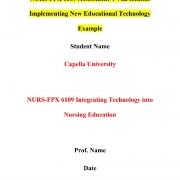 NURS FPX 6109 Assessment 4 Vila Health: Implementing New Educational Technology
NURS FPX 6109 Assessment 4 Vila Health: Implementing New Educational Technology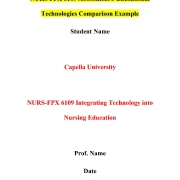 NURS FPX 6109 Assessment 3 Educational Technologies Comparison
NURS FPX 6109 Assessment 3 Educational Technologies Comparison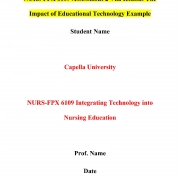 NURS FPX 6109 Assessment 2 Vila Health: The Impact of Educational Technology
NURS FPX 6109 Assessment 2 Vila Health: The Impact of Educational Technology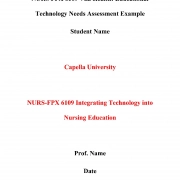 NURS FPX 6109 Assessment 1 Vila Health: Educational Technology Needs Assessment
NURS FPX 6109 Assessment 1 Vila Health: Educational Technology Needs Assessment NURS FPX 6107 Assessment 1 Curriculum Overview, Framework, and Analysis
NURS FPX 6107 Assessment 1 Curriculum Overview, Framework, and Analysis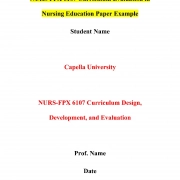 NURS FPX 6107 Assessment 3 Curriculum Evaluation
NURS FPX 6107 Assessment 3 Curriculum Evaluation